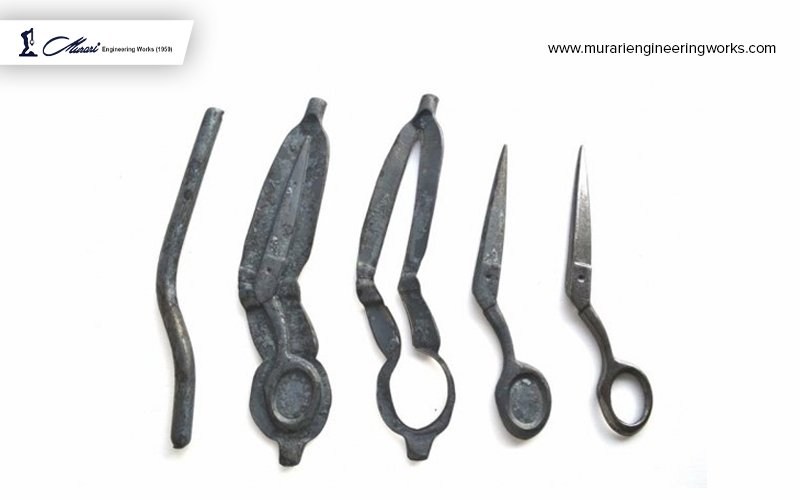Whether it is tailoring or surgery, high-quality and safe scissor blades are the need of every industry. Scissor blades are either machine-made or handmade, and some use hand tools for scissor blade finishing.
Handmade scissor blades make the finest quality and sharp scissors but are time-consuming.
Are scissor blades manufactured with hot forging or cold forging processes? Let us dive into the blog to learn more about the scissor blade forging process.
Creating Blanks
The blanks refer to the two blades that make the scissors. Steel is the main component that forms scissors. Scissor blades are either formed with direct wire cutting in the shape of scissor blades or cutting sheets in the shape of rods and then forging to fabricate scissor blades.
The steel sheets are cut into steel rods and then heated in a furnace till it becomes red hot and then forged in the shape of blades with the help of a forging machine– forging block.
After the steel blades cool down, they are cold-forged.
Trimming
The product obtained goes through another forging process to remove the excess metal from the blank edges and the inside of the blank to create a finger hole.
The blanks undergo a heating and cooling process under different temperatures to harden the metal surface. A small hole is drilled in the centre of the two blanks to screw them together.
Tempering
The rapid heating and cooling process strengthens the blanks and enhances the blade’s durability and shelf life.
Scissor blade forging India is a rare process. Although companies mention that they have forged scissors, most of which are wire cut. The cost of fabricating forged scissors is high compared to laser cutting because they require different machinery and labour skill.
Grinding
The grinding process sharpens the edges by removing the excess metal. The blades are moved along the sanding belt with precision.
Continuous grinding action heats the blades and can cause warping. To avoid overheating of scissor blades, cooling liquids are constantly poured on them.
Joining the Handles
The handles of a scissor can either be made from a similar but low-quality metal or plastic. The metal handles are welded to the blanks while the metal blades are only inserted in the hollow segments of the plastic blades.
Polishing and Painting
Here the final touches to the scissor blades are made. Any dents or scratches on the blades are removed at this stage.
The screws and rivets are lubricated to ensure a smooth installation process and reduce tension on the blades. Steel is corrosion resistant but to give them an extra protection layer, they are either coated with nickel or chromium.
Why Steel is used to Manufacture Scissor Blades?
Steel is hard and durable and perfect for making scissor blades. Besides, steel is also corrosion resistant, and since the scissor blades are not made from Steel-Nickel alloy, they are best for people allergic to Nickel.
Which is the best scissor blade forging industry Ludhiana?
Murari Engineering Works has been in the scissor blade forging business since 1959. Our products go through quality supervision satisfactory for national and international standards.
Our diligent and skilled workers have turned our industry into one of the leading forging units in Punjab. Our constant efforts have gained us trusted partners globally.

